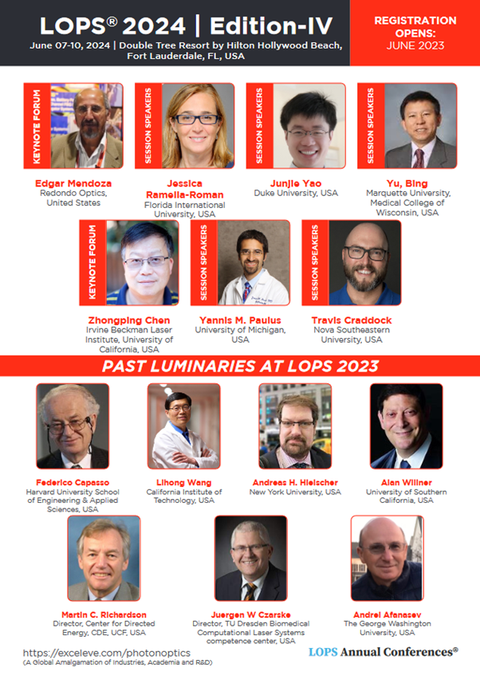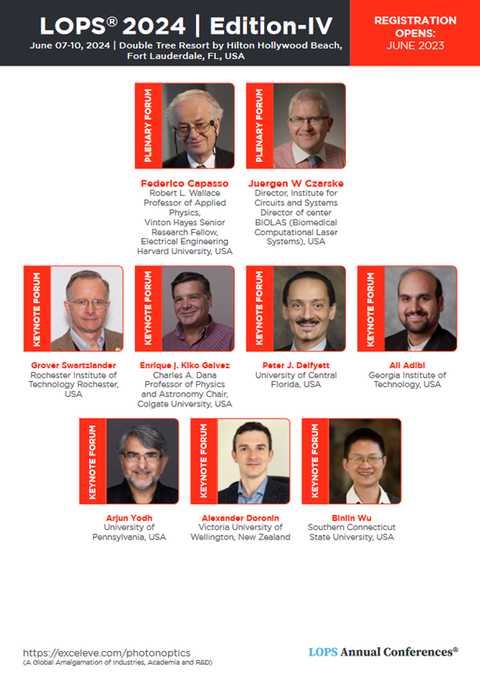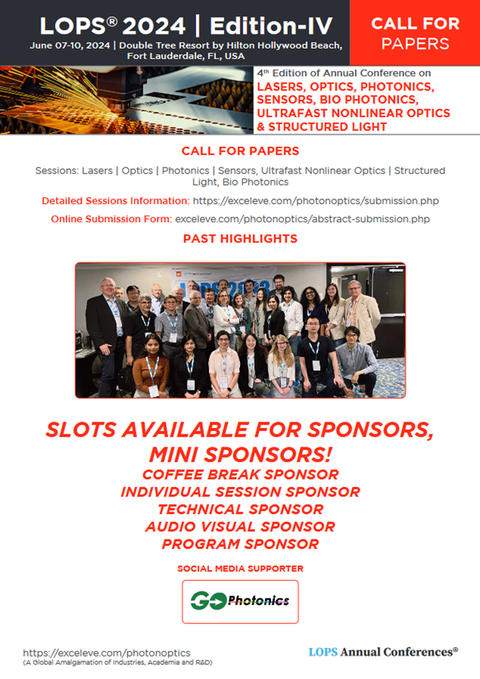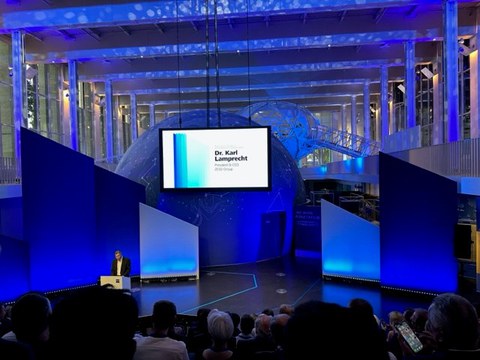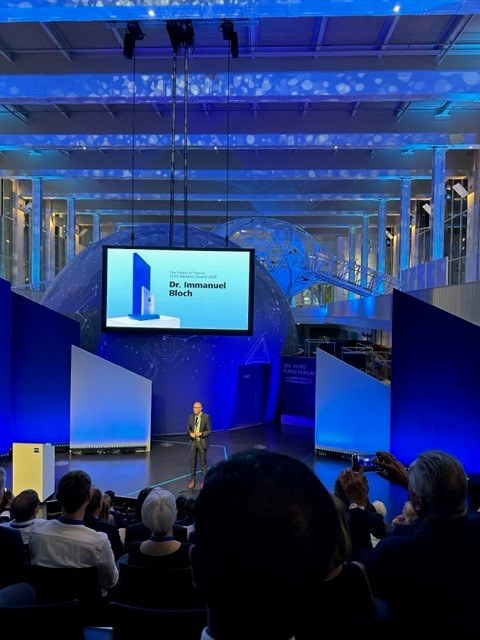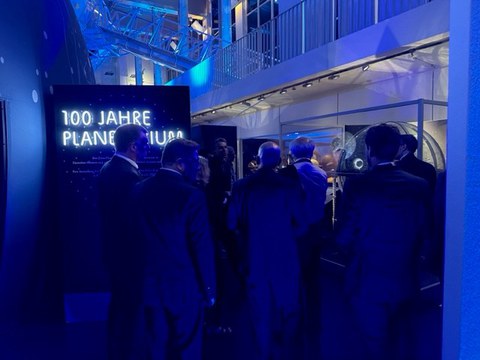World of Photonics Congress 2023
International Conferences
LOPS® 2023 (June 2-5 2023) | Annual Conference
60+ Renowned Talks (total)
10+ Plenary Talks
40+ International Presentations
16+ Virtual Talks
Representation from Globally renowned eminent experts from reputed organizations Cutting edge talks on Latest Research areas.
The ZEISS Research Award promotes collaboration between science and industry and drives research in the optical industry.
We are proud to award this prize and to support the innovative research projects of the prize winners.
Dr. Karl Lamprecht Chairman of the Executive Board of the ZEISS Groupread more
Quantum physicist Prof. Dr. Immanuel Bloch wins ZEISS Research AwardMunich 2023, World of Photonics
He is considered one of the leading scientists in the field of quantum physics: Prof. Dr. Immanuel Bloch has been awarded the "ZEISS Research Award" for his fundamental work in the field of experimental quantum simulation with ultracold atoms. read more
Award ceremony on the eve of LASER in Munich.
For his work, the international jury of experts chaired by Prof. Jürgen Mlynek of the Humboldt University Berlin has honored him with the coveted award. The award ceremony will take place in Munich on June 26, 2023—the evening before LASER World of PHOTONICS (June 27-30, 2023). ZEISS is inviting guests to the Deutsches Museum and expects around 200 guests from research, science, and technology. In addition to the “ZEISS Research Award”, the “Carl Zeiss Award for Young Researchers” will be presented there to three young scientists: Dr. Simon Baier from the University of Innsbruck, Dr. Arindam Ghosh from the Julius Maximilians University of Würzburg and Dr. Dasha Nelidova from the University of Basel. Baier works on quantum mechanics at the Institute for Experimental Physics in Innsbruck. Ghosh does research in biotechnology and biophysics. And Nelidova is working on ophthalmology at the Institute of Molecular and Clinical Ophthalmology in Basel. She has developed a novel method to restore vision after age-related macular d egeneration—the most common cause of blindness in industrialized countries.read more
Clear the stage for an event of superlatives ! -
“A highly dynamic field of innovation"
As General Chairs of the SPIE Digital Optical Technologies 2023, SPIE President Dr. Bernard C. Kress, Head of XR Hardware at Google, and Prof. Juergen Czarske, Director of BIOLAS – Biomedical Computational Laser Systems Center and of Institute for Circuits and Systems, TU Dresden, speak about expanding applications of digital optical techniques, AI as a driving force in this dynamic field of innovations, and the highlights of this year's conference.
What are the focuses of the SPIE Digital Optical Technologies 2023?
Czarske: Digital optical technologies are a highly dynamic field of innovation that is becoming more and more crucial for a huge number of applications. This goes far beyond smart glasses and immersive displays for augmented, virtual, or mixed reality (xR) applications: Be it automotive and robotics technology, data communication, biomedicine, the Internet of Things (IoT) or mobile broadband data communication via 6G - sooner or later you will meet digital optical processes. Our conference explores this field of innovations from three directions. Digital in design, digital in manufacturing and digital in operation. Each of these is backed up by a wealth of presentations that address the respective challenges. In design, the topics include issues of topological optimization or the possibilities of iterative and non-iterative real-time optimization exploiting deep learning methods. At manufacturing, the focus will be on lithography techniques as well as novel additive or subtractive manufacturing techniques including digital 3D printing. The presentations on the operation of digital optical processes are mainly dedicated to the capabilities of highly dynamic digital reconfiguration of functions, imaging, and display and sensing functionality.
Kress: I would like to briefly add some background to the conference. We are deliberately not specifying any topics because digital optical technologies, as a typical cross-sectional technology, are used in very different applications. We are still defining a clear scope. The papers submitted will make an important contribution to this, because the definition can only come from the community. Originally, the term goes back to the Digital Optics Corporation (DOC), founded in 1995 to address optical computing. At the time, the physical limits of conventional processors appeared to have been reached. Around millennium, forecasts followed that all optical storage would soon be holographic. This was followed by the hype of optical telecom and finally xR. Currently, there is a lot of talk about computational imaging and computational display combined with artificial intelligence (AI). The high expectations have so far only been fulfilled in optical telecom and optical interconnects on computers. But many foundations laid since 1995 are now becoming useful for quantum computing, which in many cases relies on silicon photonics, which can bridge the gap from cryo to conventional computing. What I want to express with this side note is that digital optical technologies are a typical enabling technology that can become fruitful for many applications. The hypes fade, but digital optical technologies remain. This is how the diversity of applications that Juergen just described comes about. Whether sensor technology, automotive LiDAR, biophotonics, metaverse and much more. First the hype, then the Valley of Death and finally the broad application with steady growth. With our conference, we offer a platform that provides space for this innovation.
Are there currently any fascinating technology trends in your segment of photonics?
Czarske: Absolutely. We are seeing display technologies being increasingly applied to imaging and sensing at different scales. Examples include the use of hybrid refractive/diffractive optics in the field of macro-optics, or the increasingly clear trend toward exploiting the possibilities of silicon photonics for micro-optics. And in the field of nano-photonics, optical meta-surfaces (OMs) – i.e., surfaces patterned at sub-wavelength scales that allow for the very effective manipulation of light - are evidence for the ongoing technology transfer. Yet another highly exciting trend is the increasingly widespread use of artificial intelligence (AI) and machine learning (ML), or deep neural networks (DNN). These promise enormous potential, especially for biomedical applications, and are already becoming game changers. read more

